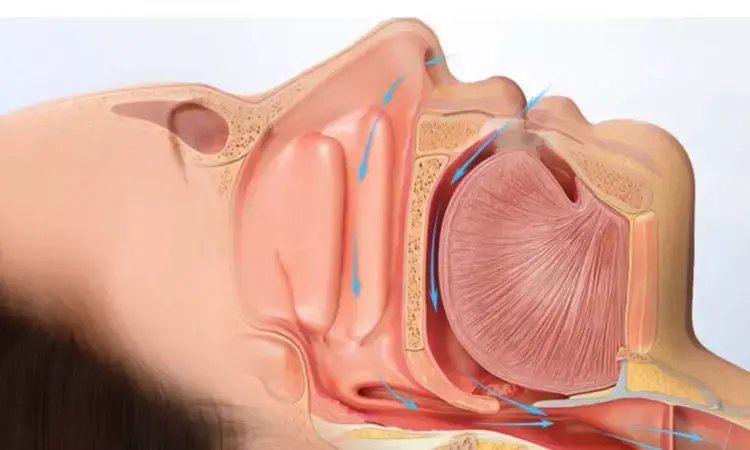- Home
- Medical news & Guidelines
- Anesthesiology
- Cardiology and CTVS
- Critical Care
- Dentistry
- Dermatology
- Diabetes and Endocrinology
- ENT
- Gastroenterology
- Medicine
- Nephrology
- Neurology
- Obstretics-Gynaecology
- Oncology
- Ophthalmology
- Orthopaedics
- Pediatrics-Neonatology
- Psychiatry
- Pulmonology
- Radiology
- Surgery
- Urology
- Laboratory Medicine
- Diet
- Nursing
- Paramedical
- Physiotherapy
- Health news
- Fact Check
- Bone Health Fact Check
- Brain Health Fact Check
- Cancer Related Fact Check
- Child Care Fact Check
- Dental and oral health fact check
- Diabetes and metabolic health fact check
- Diet and Nutrition Fact Check
- Eye and ENT Care Fact Check
- Fitness fact check
- Gut health fact check
- Heart health fact check
- Kidney health fact check
- Medical education fact check
- Men's health fact check
- Respiratory fact check
- Skin and hair care fact check
- Vaccine and Immunization fact check
- Women's health fact check
- AYUSH
- State News
- Andaman and Nicobar Islands
- Andhra Pradesh
- Arunachal Pradesh
- Assam
- Bihar
- Chandigarh
- Chattisgarh
- Dadra and Nagar Haveli
- Daman and Diu
- Delhi
- Goa
- Gujarat
- Haryana
- Himachal Pradesh
- Jammu & Kashmir
- Jharkhand
- Karnataka
- Kerala
- Ladakh
- Lakshadweep
- Madhya Pradesh
- Maharashtra
- Manipur
- Meghalaya
- Mizoram
- Nagaland
- Odisha
- Puducherry
- Punjab
- Rajasthan
- Sikkim
- Tamil Nadu
- Telangana
- Tripura
- Uttar Pradesh
- Uttrakhand
- West Bengal
- Medical Education
- Industry
Mouth Closure May Worsen Airflow in Patients with Severe Obstructive Sleep Apnea, unravels study

Researchers found that clenching the mouth at night may help to exacerbate airflow in patients suffering from obstructive sleep apnea (OSA), especially those who are more dependent on mouth breathing. A new study contradicts the recent hype of "mouth taping" as a preventive measure against mouth breathing, concluding that this is the wrong approach to take for certain OSA patients.
Obstructive sleep apnea (OSA) is characterized by repeated episodes of airway obstruction during sleep, which causes disrupted breathing and poor oxygen levels. Most commonly, it is typical in patients with OSA to breathe through the mouth, but more recently, there's been the hashtag on TikTok of "mouth taping" as a treatment method for OSA-forced nasal breathing. According to a new study by Daniel Vena, PhD from Brigham & Women's Hospital and Harvard Medical School, this practice raises issues about safety and efficacy.
For the research, the mouths of 54 patients were manually closed during the period of drug-induced sleep to determine their effects on airflow. The outcomes were that mouth closure improved airflow in some patients but worsened it in others, particularly those who relied mainly on mouth breathing.
The study published in JAMA Otolaryngology-Head & Neck Surgery aimed to evaluate the effect of oral closure during sleep on airflow. Altogether 54 adult OSA patients were studied, with a median age of 55 years, BMI of 28.9, and an apnea-hypopnea index of 26.9 events/hour. Researchers induced sleep with propofol and manually closed the patients' mouths to see whether or not they would alter the airflow.
In the 32 patients who experienced mild mouth breathing (oral airflow before maneuver was 0.05 to 2.2 L/min), manually occluding the mouth resulted in a 53.1 percentage-point increase in airflow, equivalent to 2.0 L/min.
In the 12 patients who were major mouth breathers (>2.2 L/min oral ventilation during normal sleep), mouth closure reduced ventilation by 40 percentage points or 1.86 L/min (95% CI -3.1 to -0.6).
Patients suffering the worst obstruction of the soft palate and destined for mouth breathing demonstrated the biggest drops in flows, because their mouths were closed.
Propofol was administered to sleep-induced patients for routine clinical endoscopies and airflow measurements. Researchers operated to alternately close the mouth and then release it in order to see the effect on breathing. In each patient, at least 15 breath cycles were recorded, alternating between mouth closure and relaxed mouth positioning.
There were a number of limitations to the study. It was an acute outcome trial measuring single breath effects rather than long-term outcomes, so these results may not reflect the longer-term impact of forced mouth closure during sleep. Moreover, the contribution of nasal obstruction to open-mouth breathing was not measured and could be a critical factor in explaining these findings.
Researchers advise doctors to take proper caution in recommending such treatments like using mouth tapes and monitor patients closely so the therapy doesn't worsen their disease condition. Long-term effects of such therapies on OSA patients should be explored as well.
Reference:
Yang, H., Huyett, P., Wang, T.-Y., Sumner, J., Azarbarzin, A., Labarca, G. P. T., Messineo, L., Gell, L. K., Aishah, A., Hu, W.-H., White, D. P., Sands, S. A., Wellman, A., & Vena, D. (2024). Mouth closure and airflow in patients with obstructive sleep apnea: A nonrandomized clinical trial. JAMA Otolaryngology-- Head & Neck Surgery. https://doi.org/10.1001/jamaoto.2024.3319
Dr Riya Dave has completed dentistry from Gujarat University in 2022. She is a dentist and accomplished medical and scientific writer known for her commitment to bridging the gap between clinical expertise and accessible healthcare information. She has been actively involved in writing blogs related to health and wellness.
Dr Kamal Kant Kohli-MBBS, DTCD- a chest specialist with more than 30 years of practice and a flair for writing clinical articles, Dr Kamal Kant Kohli joined Medical Dialogues as a Chief Editor of Medical News. Besides writing articles, as an editor, he proofreads and verifies all the medical content published on Medical Dialogues including those coming from journals, studies,medical conferences,guidelines etc. Email: drkohli@medicaldialogues.in. Contact no. 011-43720751


